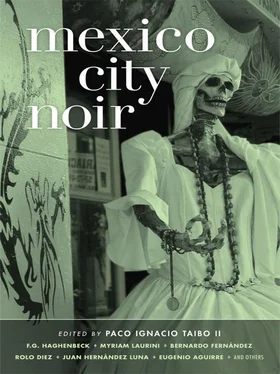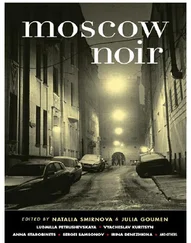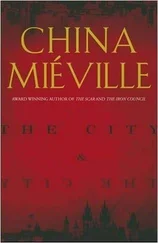Ponce & Cohen Cassette. Side A.
July 19, 2007
[I’ve known Ponce de León since I began covering the police beat, what we call la nota roja . We were both novices: he’d just finished up at the Instituto Nacional de Ciencias Penales and I at the School of Mass Communication. There’s been a lot of water under the bridge since then. He’s a man who’s close to the law, opposed to torture, and in favor of a professional police force. He likes investigations, technical stuff, analyzing hair and other clues. In other words, his thing is being a sleuth so he can solve crimes. Nonetheless, at no point do I forget my grandfather Levi’s words: “Fidarsi é bene, ma no fidarsi é meglio.” To that I add my own professional skepticism, and that’s why the tape recorder has become a permanent part of my person, like a prosthetic I can’t take off, and so I hide it or show it depending on the circumstances. We met at El Chisme, where you can still talk without the background music forcing you to scream.]
“Mikel Ortiz is driving me crazy. I don’t know if he’s a psychopath, a total cynic, a con man, or if he just has some terrible problem with his nerves.”
“Ponce, have you lost your mind? Mikel is just a naïve boy from the provinces. A practicing Catholic, serious and responsible both at work and in his private life.”
“Christians are the worst. They hide behind the church. And that fag unsettles me. I’ll tell you something and then you can say what you think. I asked him for some information on the friend who he was allegedly hanging out with on the night of the crime. Initially he only knew her first name, but then he finally gave up her last name and a physical description. With the sketch, we went to the parish where he says he met her. The priests said they’d never seen her before-that is, assuming they’re not also accomplices. Although they did give us a clue. On Michoacán Street, we found the Viterbo family. According to the fag, the chick’s name is Beatriz Viterbo.”
“Beatriz Viterbo? I knew he had a friend, maybe a girlfriend, named Beatriz, but certainly not Viterbo.”
“Yes, my friend, Viterbo. We went to the house and were greeted by a skinny old woman who looked just like the Beatriz in the sketch, but about seventy years older. The lady said she didn’t recognize the girl in the sketch, same as the priests, said she’d never seen her before in her life. But the best was yet to come. We asked her if she knew Beatriz Viterbo. She said of course, that was her aunt who’d died in February 1929, and she remembered her birthday was April 30 and that for years her family would get together on April 30 to celebrate the woman’s birthday. How’s that, huh?”
“You’re messing with me. Do you know who Beatriz Viterbo is?”
“Of course I know: she’s the skinny old woman’s aunt who died in 1929 and-”
[Ponce had a little laughing attack and choked on his tequila. He raised his hands. Red-faced, gagging, he coughed a few times and then kept laughing. This went on for quite awhile. In the meantime, I finished both my tequila and his.]
“She’s the protagonist in ‘The Aleph,’ the only Borges story I’ve ever read-on your recommendation. But I didn’t just read it once: I’ve read it so many times, I know it by heart. And I’ll tell you, that faggot was really pissing me off. After I pressed her further, the old woman finally let us in. Proud of what she’d told us about her aunt, she showed us photos of Beatriz. There were several in the living room. Take note of this, because it’s crucial: there’s a hustler from Xochimilco who is, coincidentally, named Bety. Chema Molina and I exchanged crazy glances, we couldn’t believe it-last year I’d made him read ‘The Aleph.’ The old woman misinterpreted our glances and explained that her aunt had been the most beautiful woman in the city, that she’d had a dozen admirers who were loyal to her even after her death, including one in particular who always came by for tea on her birthday. That’s life-she died young, she didn’t even have time to get spoiled. I tell you, my friend, I thought I was imagining this. I’ve seen a lot of bizarre things in my time, but this was the topper. I couldn’t believe it.”
“I can’t believe it either. When did Borges come to Mexico? Did Alfonso Reyes talk to him about her? Did he have other Mexican friends? Did he write ‘The Aleph’ before he came to Mexico and met Reyes? Or did he meet Reyes when he was the ambassador to Argentina? You didn’t ask this woman if she had a basement off the dining room, did you? If not, you’re going to have to find out.”
“You’re going to have to find out yourself, my little friend, you’re the literature guy. I have to solve the murder. The prosecutor is squeezing my balls. He wants results, he wants that killer yesterday . He hates a civilized society. I’m not even going to tell him this story because he’ll send me straight to the last ring in the seventh circle of hell.”
“Couldn’t it be that the old woman has also read ‘The Aleph’ and knows it by heart and has set up the whole thing, pure fantasy, out of boredom, or because she’s demented, or for some other insane reason?”
“She didn’t make it up, there’s no fantasy here. Beatriz Viterbo is buried in the Dolores crypt, in a white marble tomb with sculpted flowers and all the decor you’d expect from that time. There’s a photo on the front in a bronze oval frame, same as the one in the living room. There are big angels on both sides and the gravestone gives the date of her death: February 28, 1929. The elderly niece, who’s the current owner of their house, is Estela Viterbo, and don’t even think about identity theft. This woman has a birth certificate, a voter registration card, receipts for her mortgage, and the water and phone bills, all in her name.”
“Fuck, what a story! Her name is Estela… and the guy goes by on the aunt’s birthdays… You have to find out more! This can’t all be coincidence.”
“I’m going to order another tequila to toast all the things you have to investigate. When we were looking at the photos, the old woman couldn’t stop talking about her aunt, and then a young woman came in, about twenty-four years old. She said hello, kissed the old woman on the cheek, and left. She was the exact opposite of the sketch: tall, thin, fragile, but darkskinned, dark-haired, black eyes, large mouth and fleshy lips, a round face, flat nose. No sooner had the door closed than the old woman explained that this was Beatriz, her housekeeper’s daughter. I should have done something, ran after her and brought her back, asked her about Mikel Ortiz-but I swear to you I could barely move, I was hypnotized, and so was Chema Molina.”
“Shit, shit, double shit! The housekeeper’s daughter-same as Violeta, a servant’s daughter. That’s Mikel’s friend Beatriz-he was trying to protect her. He was afraid the same thing that happened to him could happen to her. He told me how you messed with his head, how you stuck your gun in his mouth.”
“Don’t be ridiculous. I didn’t touch a hair on his head, and that faggot can’t take much anyway-he’s already gone crying to you about it. The gun wasn’t loaded, it was just part of the scenery; you think I’d leave a loaded gun within reach of a prisoner? He lied to you. I only pointed it at him, an unloaded Colt. He probably told you that to explain why he shit in his pants. If I didn’t squeeze these guys a little, I’d never get anything. They’re all innocent, right? I still have a lot of doubt about that Mikel.”
“Well, you can get over it. There’s a witness who saw him say good night to the girl in the park, after midnight. He and the witness greeted each other. Besides, the neighbors say he had a very good relationship with Violeta.”
Читать дальше












